Recipe: Matchamisù
Bringing a Japanese twist to a much beloved classic dessert from Veneto (and a family's recipe)
If you follow me on Instagram, you might have spotted that last week I hosted a special Matcha-infused breakfast event, in collaboration with the Premium Tea retailer Avantcha. It was a very interesting morning, and it gave me and my guests the opportunity to learn more about Matcha and tea in general (did you know that all 6 varieties of tea come from the same plant? Camellia Sinensis, to be exact.)
I first encountered Matcha during my first trip to Japan, back in 2018. If you are not familiar with it, Matcha is a ground powder derived from green tea leaves. It has a rich, earthy flavour and bright green colour, and it’s jam-packed with anti-oxidants.
Brief historical notes
Before we delve into the recipe, I just wanted to give you a little background on the hero ingredient – Matcha.
Originally invented in China in the 12th century as a way of preserving and transporting green tea (which was pulverised and then compressed into bricks), it is said to have been brought to Japan by the Buddhist monk Myoan Eisai, who observed that it had a beneficial impact during his Zen meditations. It was in Japan, under the guidance of Buddhist monks, that Matcha was slowly refined and evolved into what we know today.
In the early days, Matcha was treated by Buddhist Monks as medicine. It was a highly elitist product only reserved for the upper classes. It was only later on, around the 14th century, that the beverage started to be available to the masses. A whole ceremony (known as sadō/chadō) was created around the art of drinking tea, complete with its own, very particular etiquette (an experience I would highly recommend doing if you ever visit Japan). According to one of the tea Masters I had the pleasure to meet, Matcha was extremely popular with Samurai, as the beverage's health benefits, combined with the slow and introspective nature of the tea ceremony, acted as a sort of meditation, helping these warriors through their PTSDs.
The history of Matcha and the tea ceremony is also deeply intertwined with the Wabi-Sabi sensibility. If you are interested in reading a little more on this topic, you can find my article on Wabi-Sabi here!
The Recipe
As part of our ongoing collaboration, I have been testing and photographing a few recipes involving Matcha (you may recall my Matcha & white chocolate marbled bark?). It really is such a versatile ingredient, especially in baking! It’s strong flavour, striking colour and caffeine content makes it the perfect substitute for coffee in my favourite dessert – Tiramisù.
Tiramisù is also a very sentimental recipe for me and my family. Growing up, my uncle Roberto’s Tiramisù was legendary, and always requested at family gatherings on special occasions such as birthdays. For this twist on Tiramisù, I have been following my Uncle’s original recipe, and only swapping coffee and the chocolate dusting with matcha.
I really hope you’ll enjoy it!
Matchamisù
Serves 8–10
Prep time: 30 mins
Chill time: 8 hrs
Ingredients
400 gr Savoiardi (better if Vicenzovo)
2 heap tbsp of Matcha (plus extra for dusting)
5 Medium eggs (super fresh)
500 gr Mascarpone
120 gr Caster Sugar
1tbsp Vanilla extract
1 Lemon (juice)
Method
Take the eggs out of the fridge 1 hour before using them and the mascarpone 15 minutes before, to let it soften. Drain the excess water.
Prepare the Matcha in advance by sifting 2 tbsp of powder into a bowl. Add a dash of hot water (ideally around 80 degrees Celcius) and whisk it into a thick paste. Slowly add two cups of water. Leave aside to cool down.
Carefully divide the egg whites and yolks into two separate large bowls, making sure there is no yolk contamination in the whites, or else they won't whip properly.
Add the sugar and vanilla extract to the egg yolks. Using an electric mixer, whisk for a few minutes until the eggs reach a very pale, almost white shade of yellow.
Gently incorporate the mascarpone until you obtain a smooth and silky cream. Add a couple of lemon drops to the egg whites. This will help the whipping process, and also to take off that "eggy flavour" edge.
Whip the egg whites until stiff – you should be able to turn the bowl upside down without dropping its contents!
Using a spatula, gently fold the whipped egg whites into the cream little by little, using circular movements from the bottom to the top. It should have a light and airy consistency.
Prepare each glass by spreading a thin layer of cream at the bottom.
Cut each Savoiardo in two (or in smaller pieces, they’ll need to lay horizontally inside your glasses) and briefly dip them in the Matcha tea, on both sides. Add them laying down, curve side up, into the glass.
Spoon a generous amount of Mascarpone cream over the first layer to cover the Savoiardi. Using a fine mesh sieve, dust the cream with a thin layer of Matcha powder.
Repeat step 9 and 10 until you reach the top of the glass. Remember to leave the top layer of cream undusted!
Leave the Tiramisù in the fridge for at least 8 hrs before serving, allowing all of the flavours to merge and intensify.
Just before serving, dust some more matcha powder evenly on the top.
Enjoy!

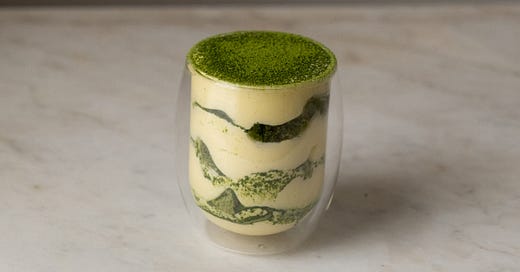



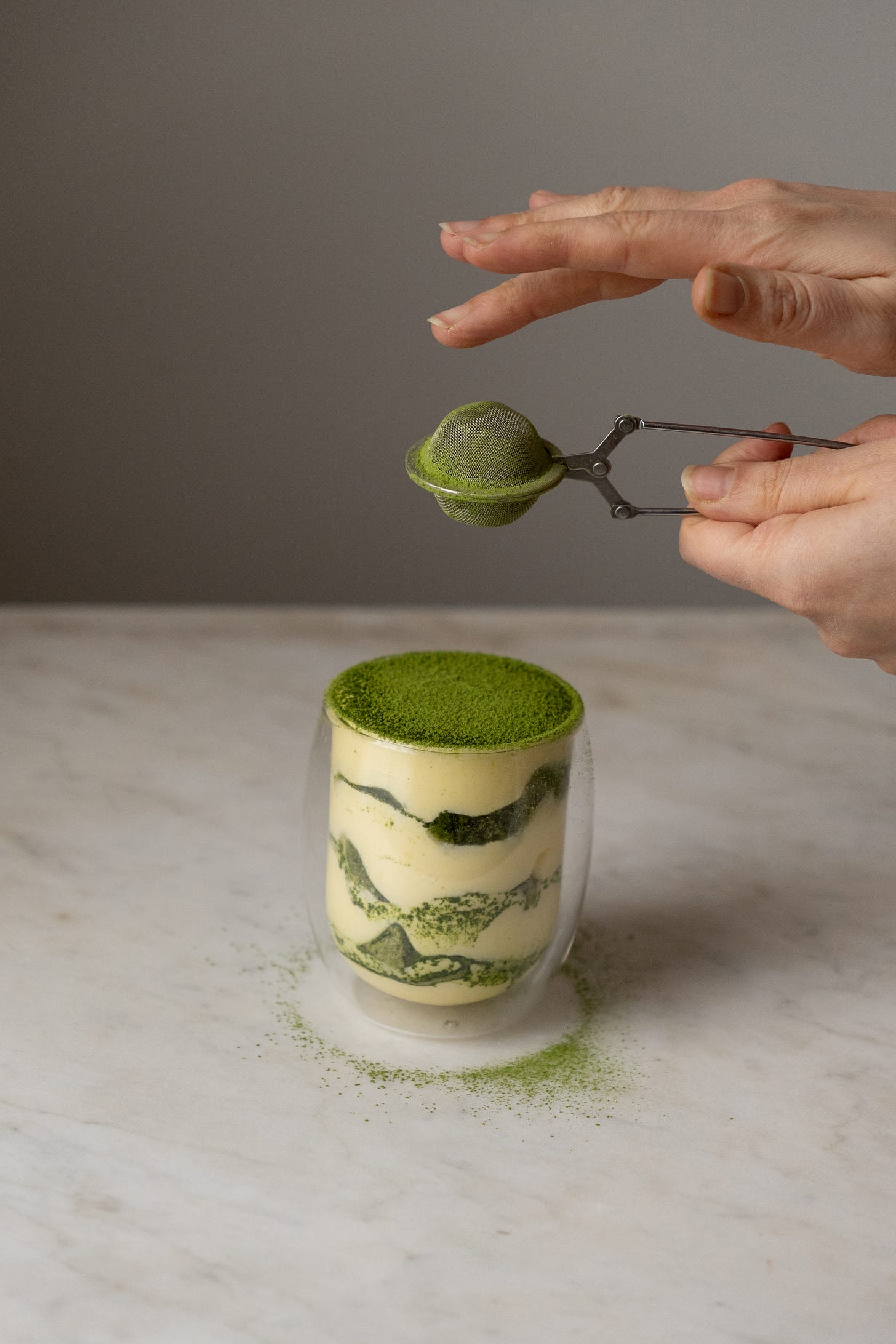
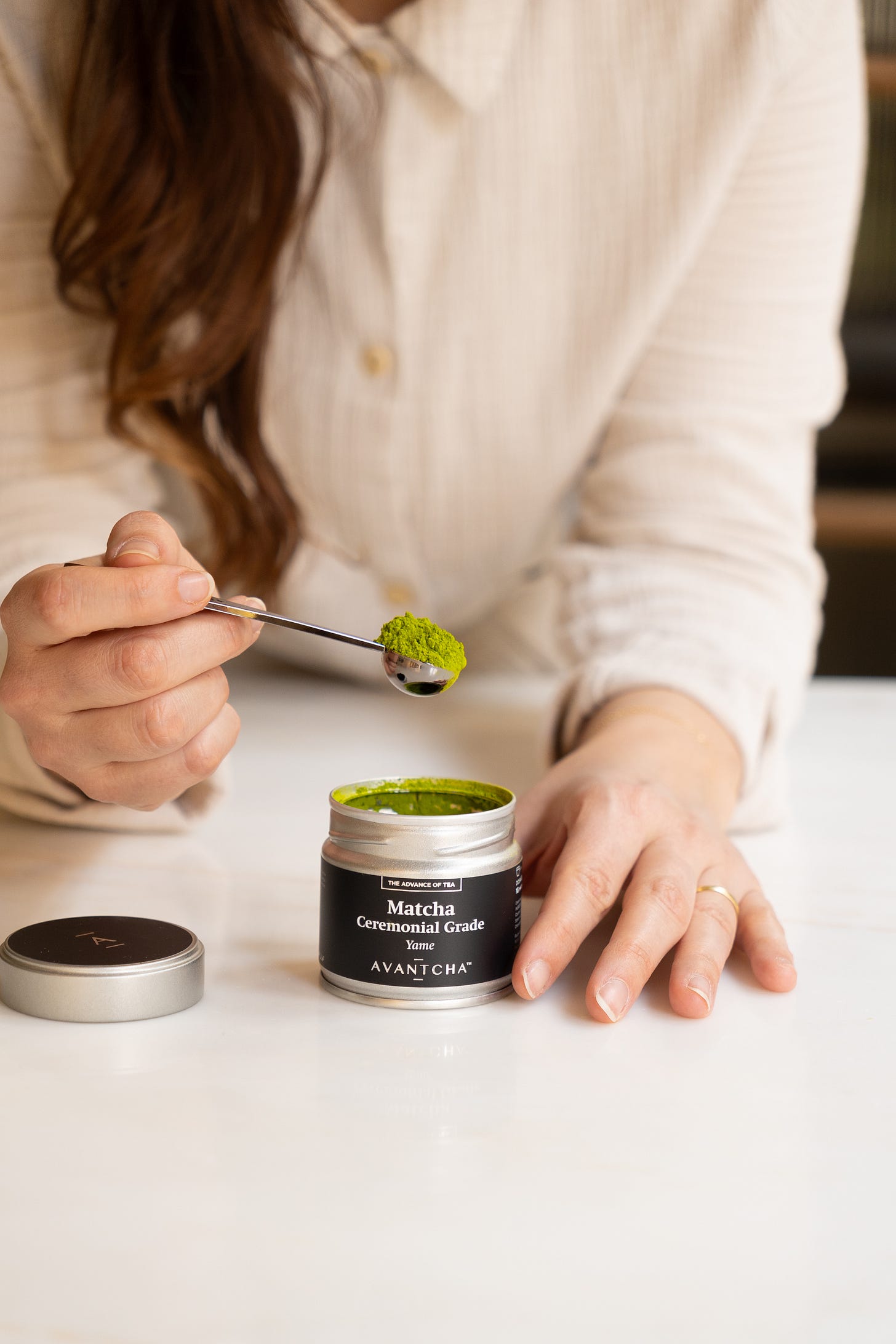
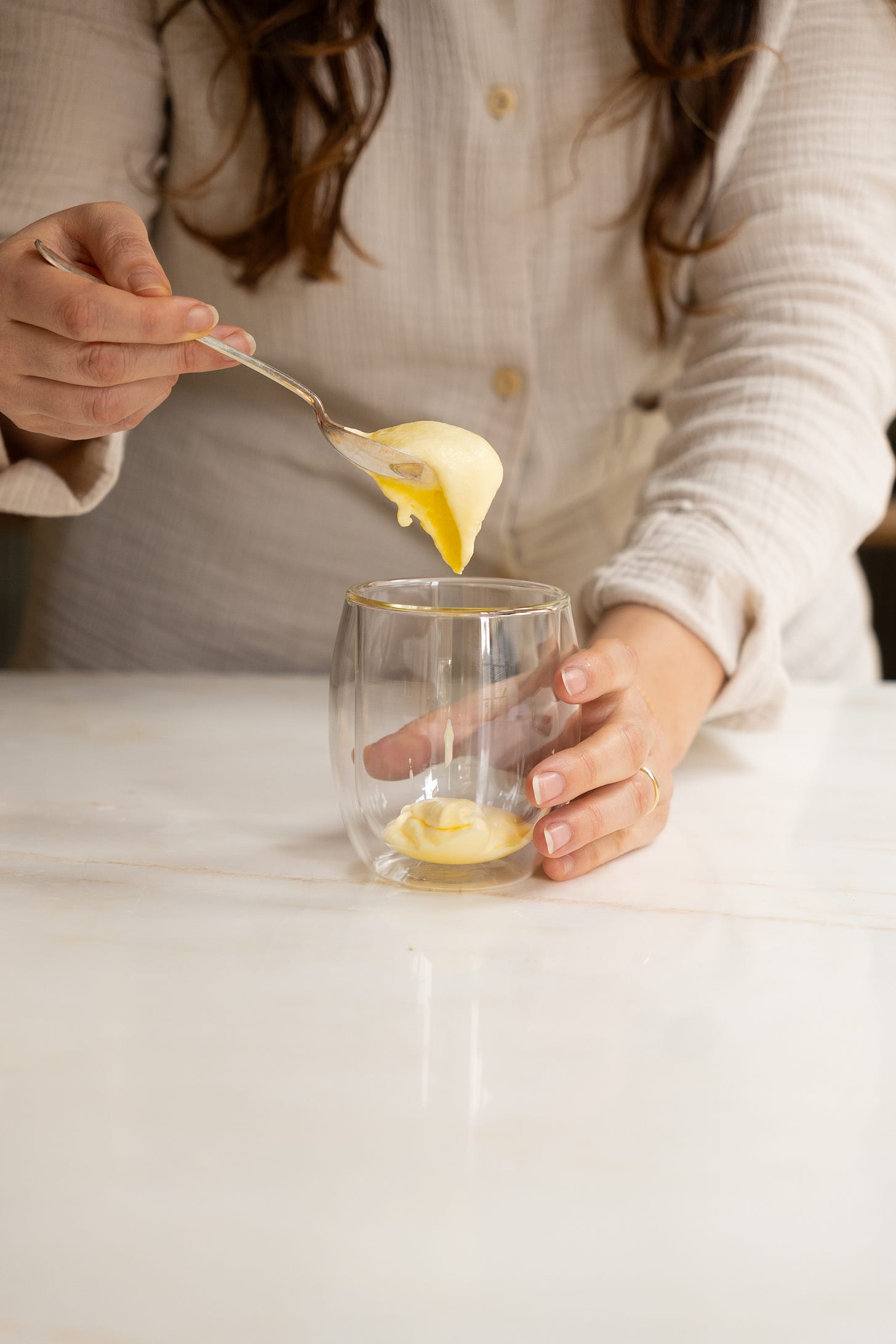
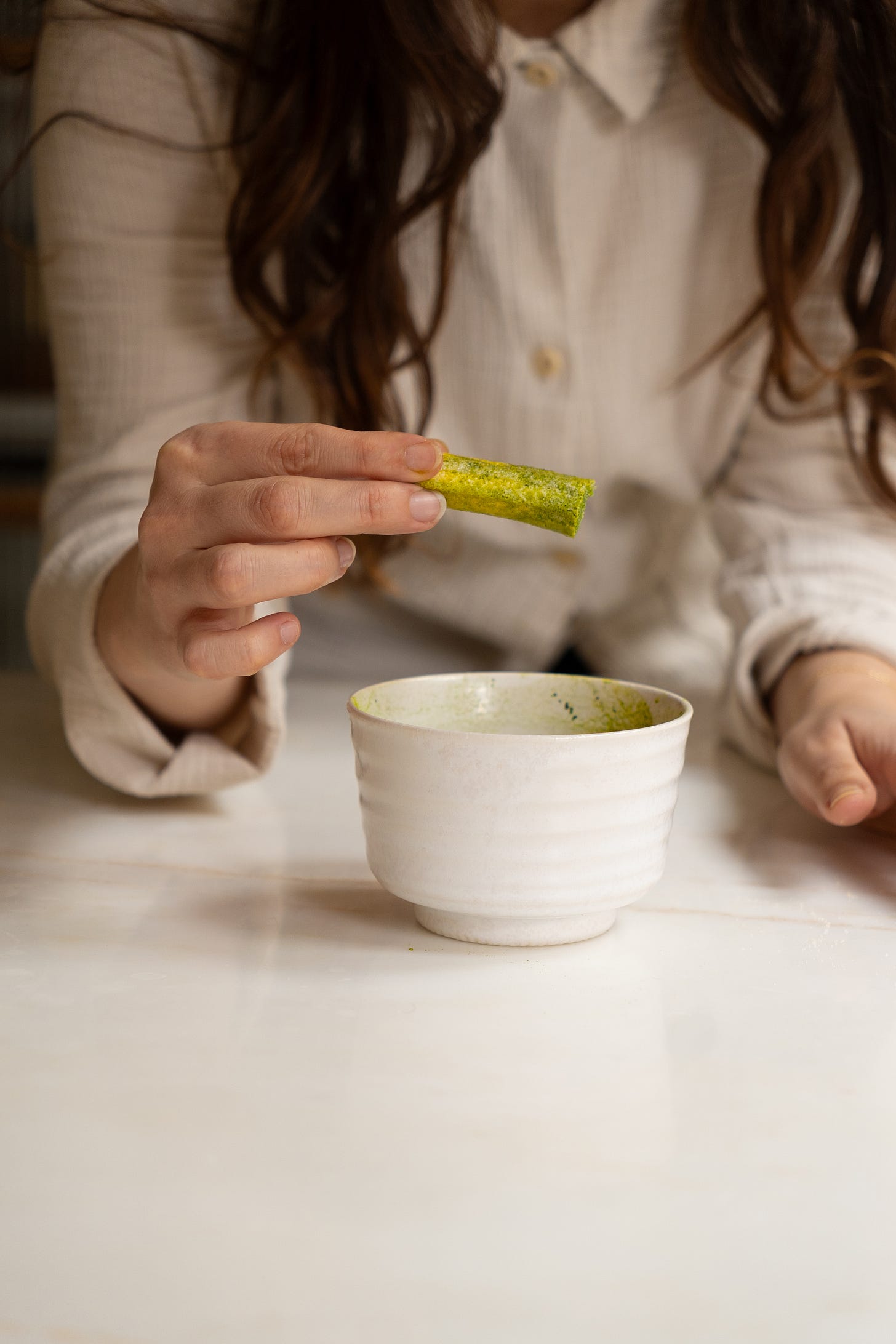
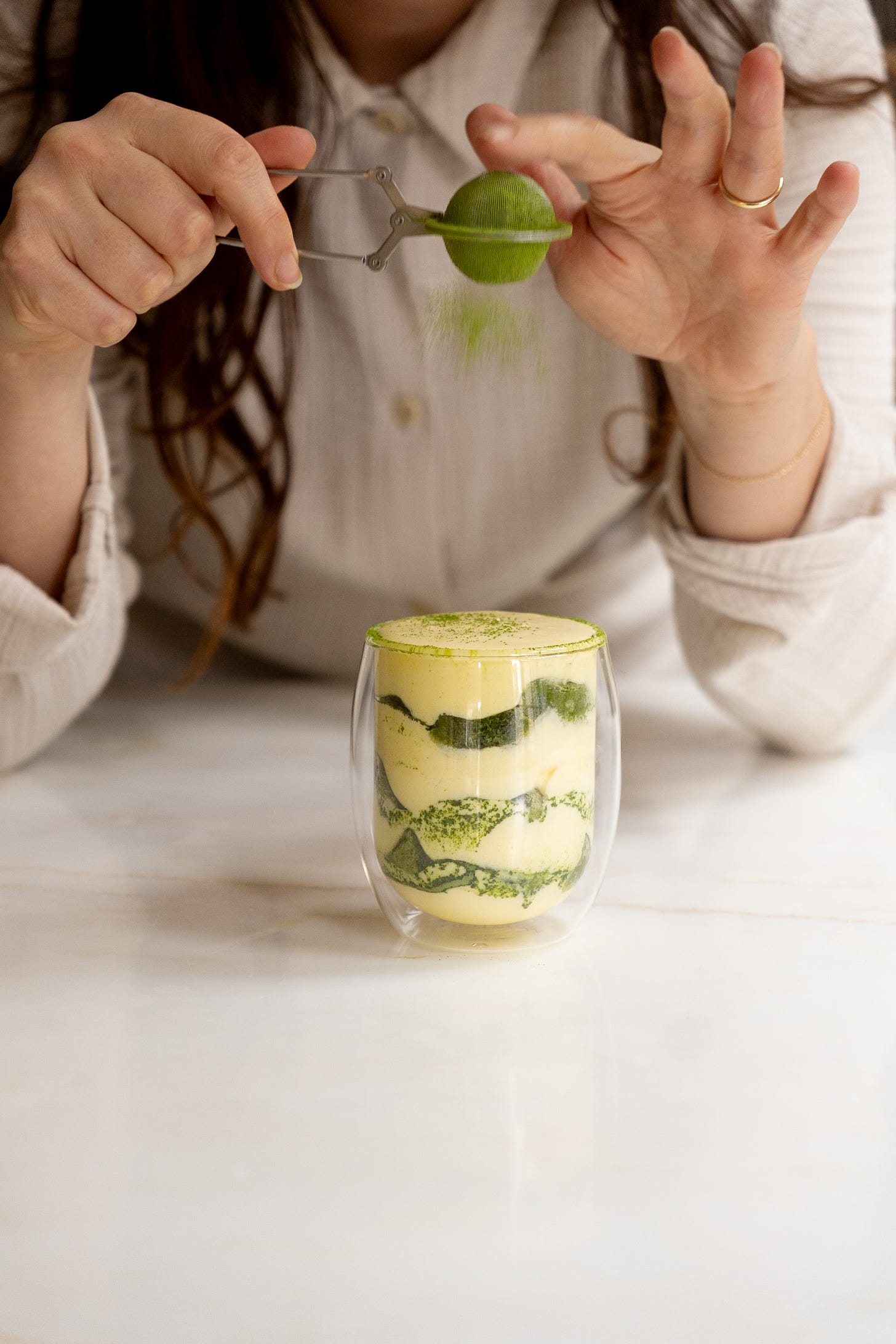
Thank you for this! I don’t like coffee and I always find myself thinking I’d love tiramisù but without the coffee. And I really love matcha desserts. This sounds perfect to me! 🥰🥰
Sounds wonderful! Can’t wait to try it, although I think I’ll dust the top with more matcha, not cocoa 😉